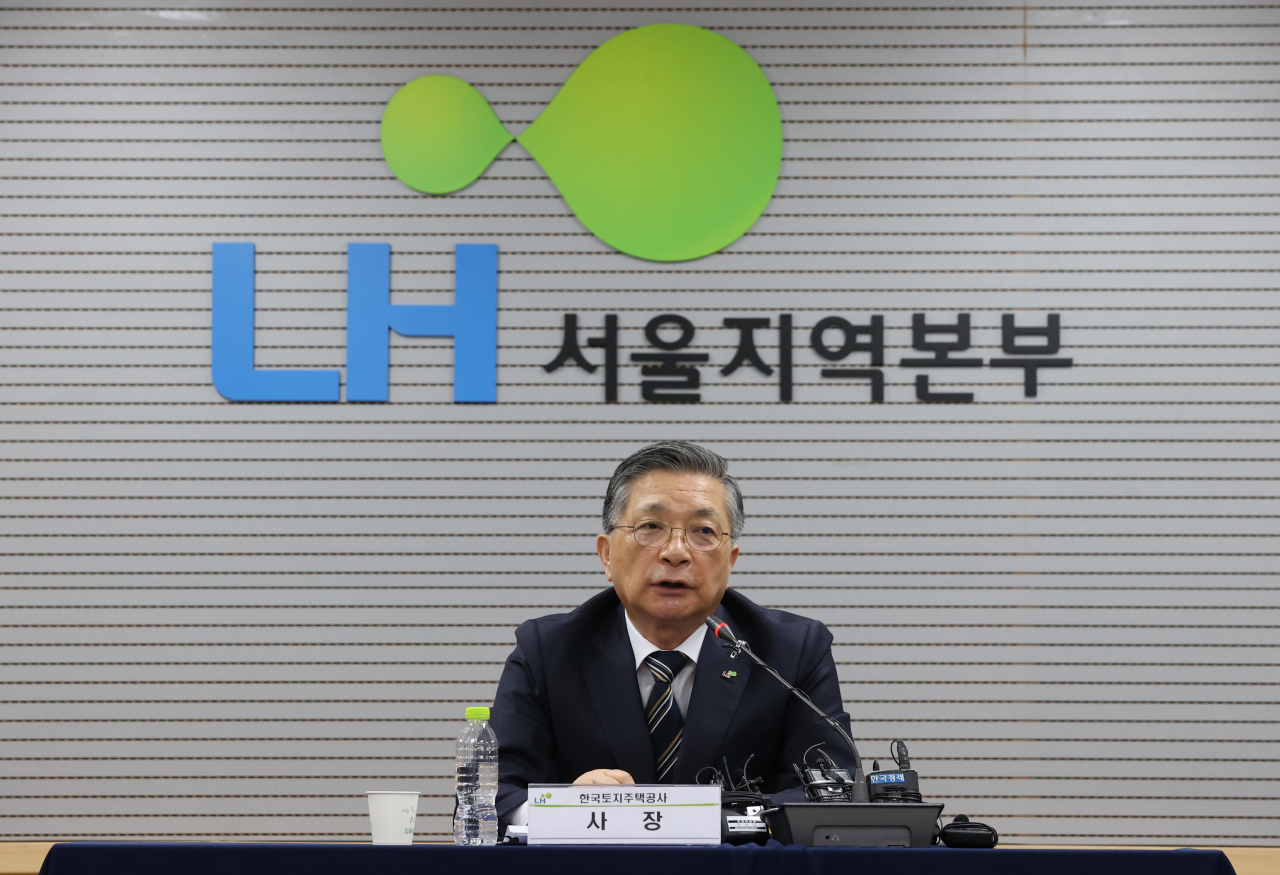 |
Lee Han-joon, the CEO of the Korea Land and Housing Corp., speaks at a press conference at the LH headquarters in Seoul on Friday. (Yonhap) |
The CEO of the state-run Korea Land and Housing Corp. (LH) offered to resign Friday amid the growing controversy over its lax oversight and poor management of apartment complexes with missing critical structural components.
CEO Lee Han-joon said he was also belatedly informed that the firm omitted five apartment complexes from its inspection report on compounds with underground parking lots built using a flat plate method.
During an emergency press conference held at the LH headquarters in Seoul, Lee said the firm's executive directors have handed in letters of resignation to take responsibility for covering up the scale of faulty apartments built under the firm.
The LH executive directors, including Lee himself, are ready to resign and await the decision from the Ministry of Land, Infrastructure and Transport, he said. He did not make clear the number of executives who had tendered their resignations.
"As we are officials of a public corporation, the opinion of the appointee (Ministry of Land) is more important than opinions of our own," said Lee, who started his three-year term last November.
"I am ready to comply with the will of the authority at any time, and during my time here (in LH), I will try to do my best."
A total of 20 complexes were missing steel reinforcement out of the 102 examined, according to Lee, five more than the figure that was previously unveiled.
On July 31, LH said 15 of 91 apartment complexes built using flat slab designs were lacking necessary steel reinforcements. The review was conducted as an apartment complex under construction in Geomdan New Town in Incheon using the flat slab design collapsed in April. It was found to have lacked the required amount of steel reinforcements in concrete slabs. LH was in charge of the construction.
The flat slab design is a way of constructing buildings using concrete columns to support concrete slabs without the use of steel beams. The design requires steel reinforcement in the concrete slabs, for safety, as the heavy pressure on the columns can cause them to break down.
LH said they decided not to add the five to the initial list, as they had "minor flaws" which were immediately fixed after being discovered.
Regarding LH's decision to omit the five complexes, Lee said he was "sincerely disappointed," and that he feels a "heavy responsibility" for it and that residents also have the right to know.
He said the building controversy has exposed the fundamental problems Korea's largest public housing provider faces.
"LH's authority is too large for the size of the organization," he said.
"(LH) must reduce its authority and size to change itself into an organization dedicated solely to the people."
It has been more than 14 years since Korea National Housing Corp. integrated with the Korea Land Corp. to create LH, but the company's reporting system still fails to run smoothly, he said. The sheer size of the company, with some 8,500 employees, makes it difficult to assign specific responsibilities to each personnel, he added.
"Innovation by external forces is inevitable, as the culture of not being able to communicate with each other through occupational partitions between (former employees of) Korea National Housing Corp. and the Korea Land Corp. is still prevalent (in LH)," he said.
Some 15 percent of Korea's households -- 2.9 million -- live in LH-built public housing units, according to the LH website.






![[Today’s K-pop] Blackpink’s Jennie, Lisa invited to Coachella as solo acts](http://res.heraldm.com/phpwas/restmb_idxmake.php?idx=644&simg=/content/image/2024/11/21/20241121050099_0.jpg)
